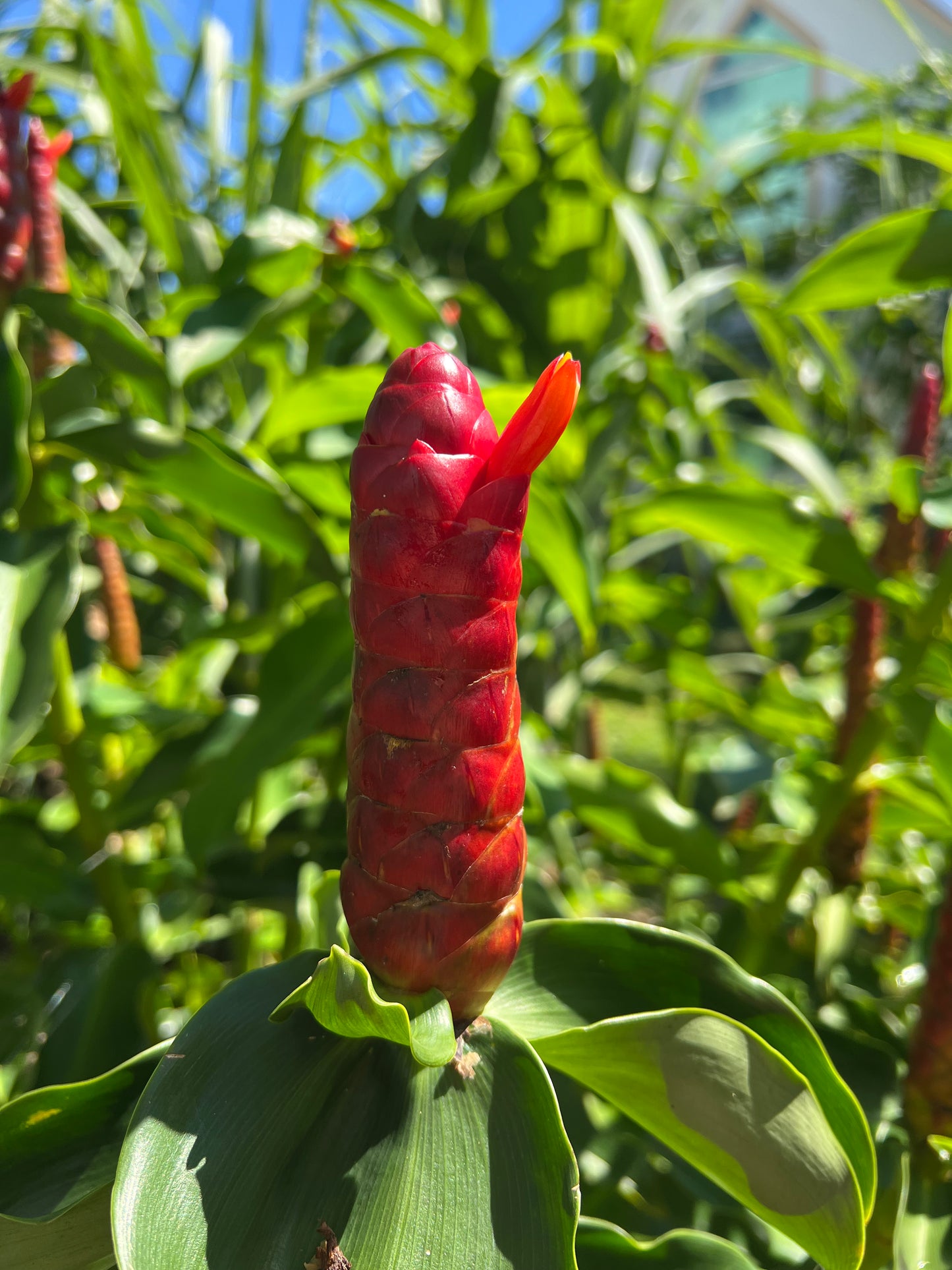
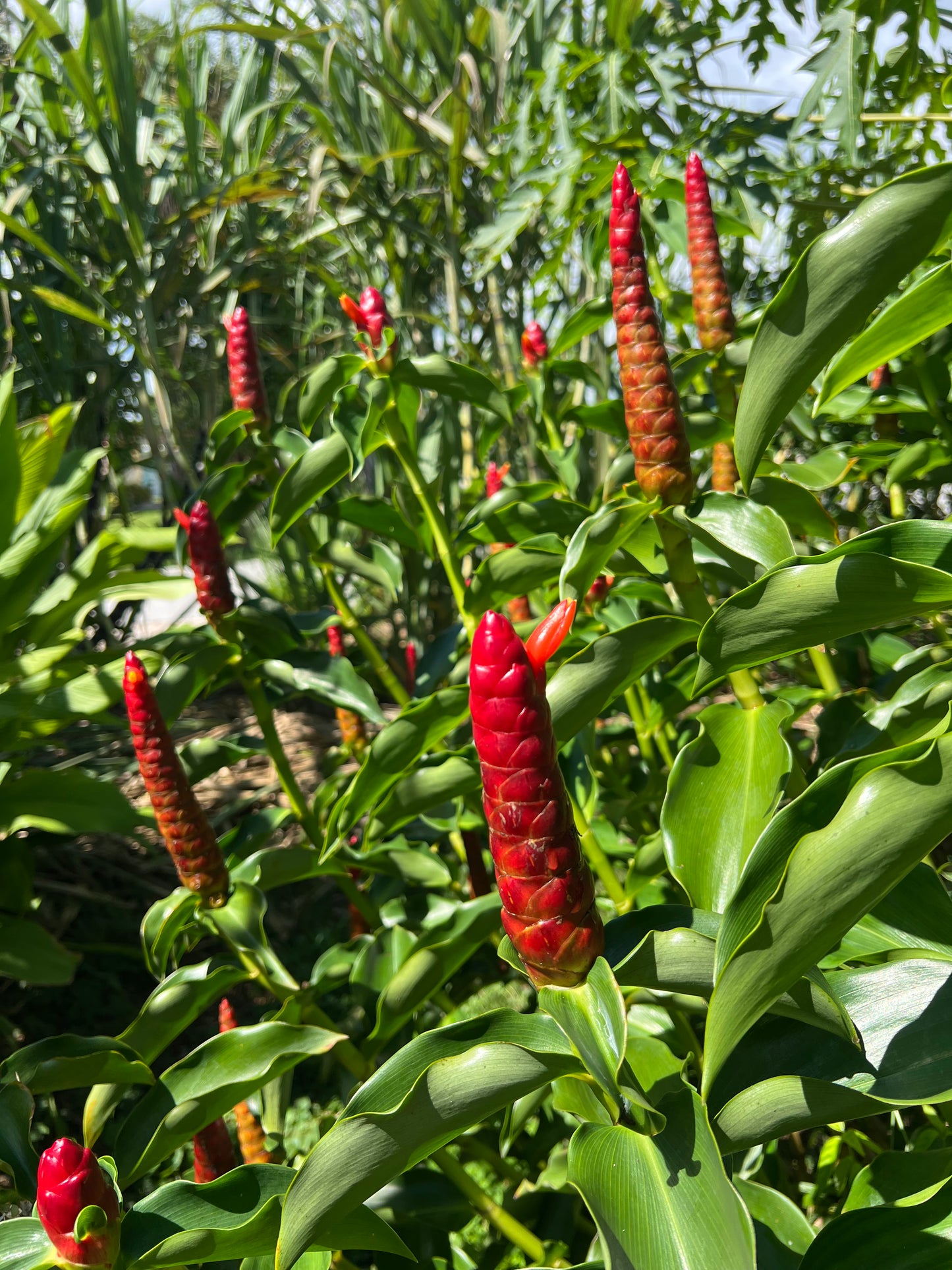
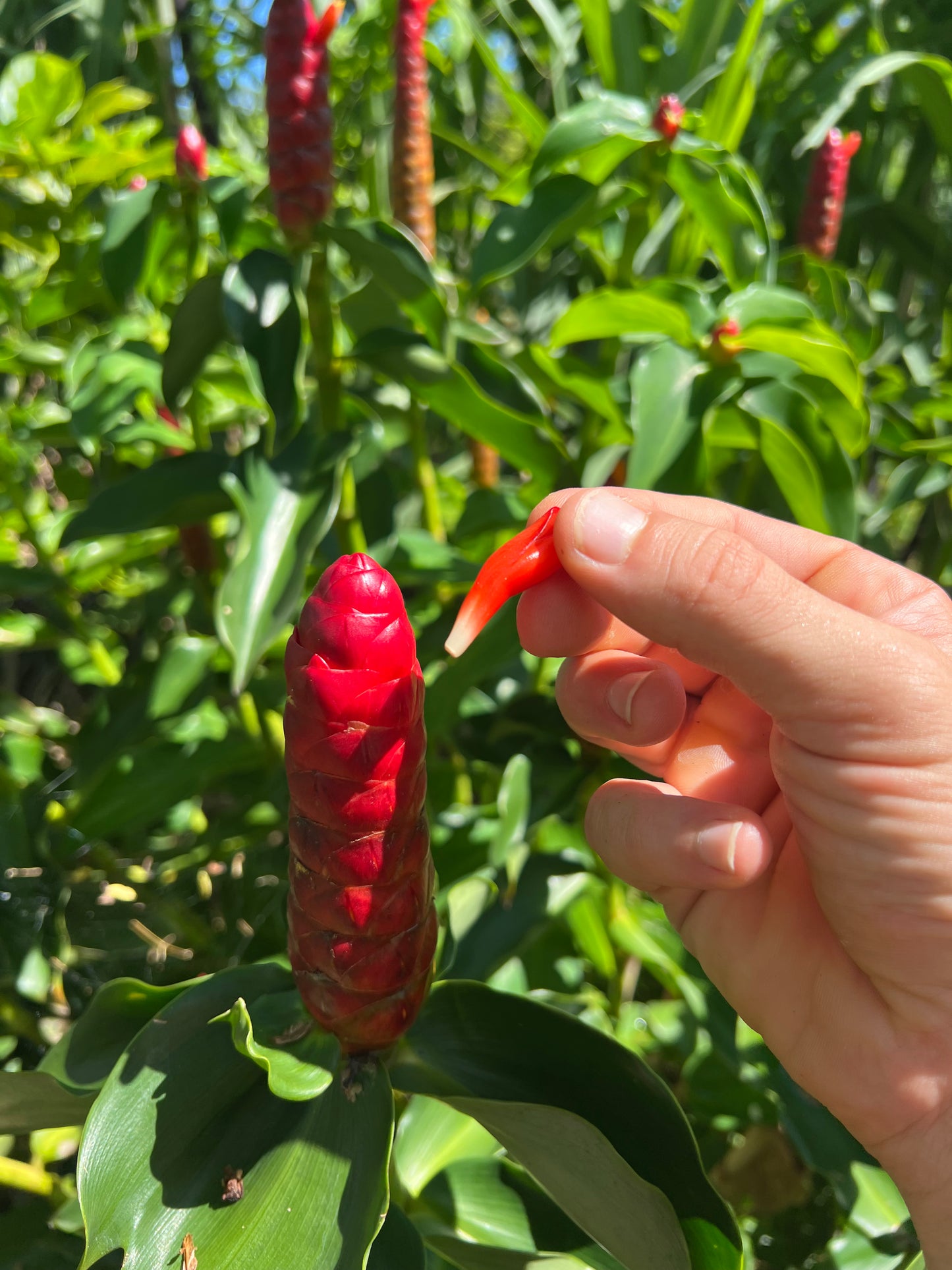
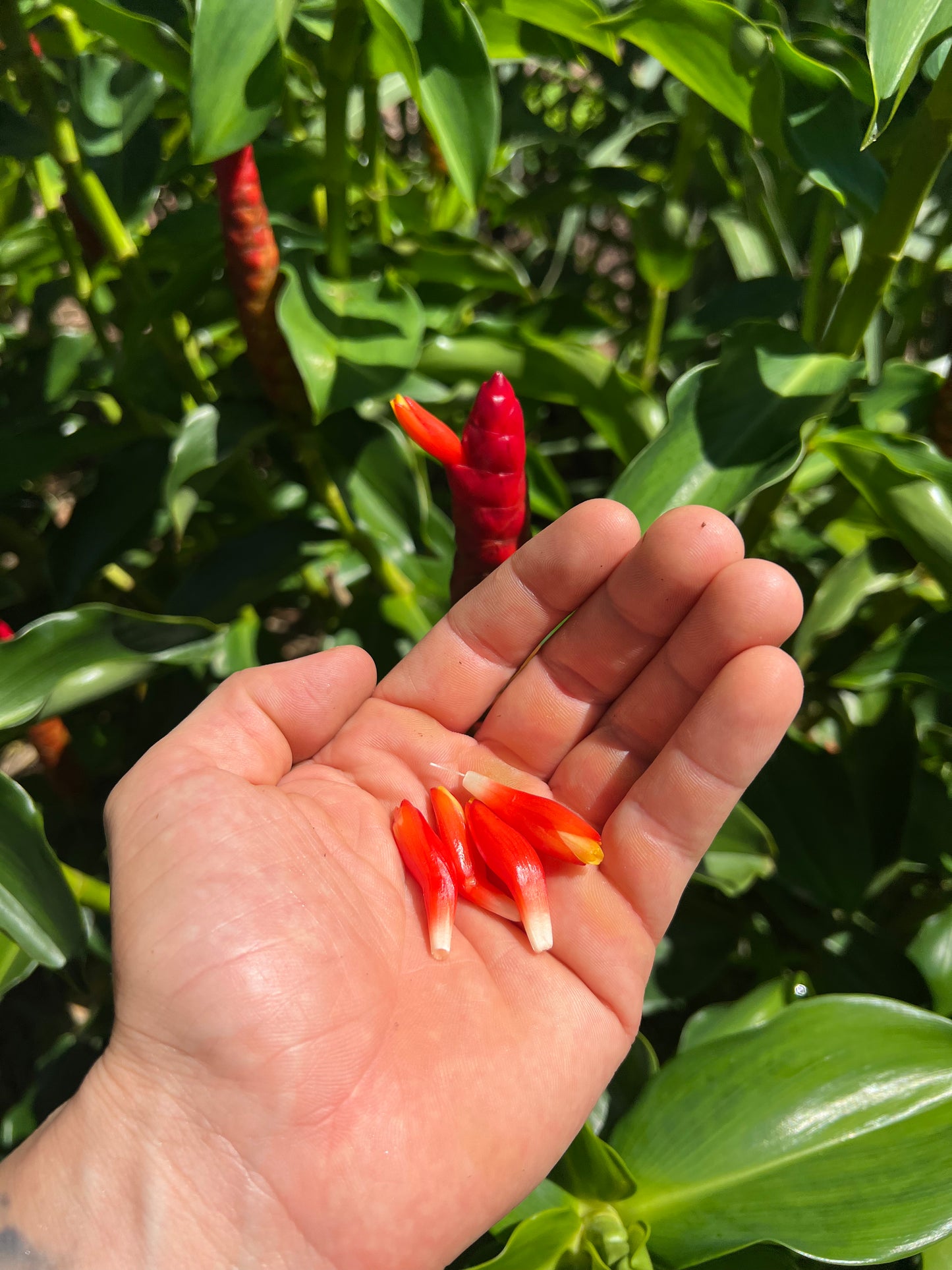
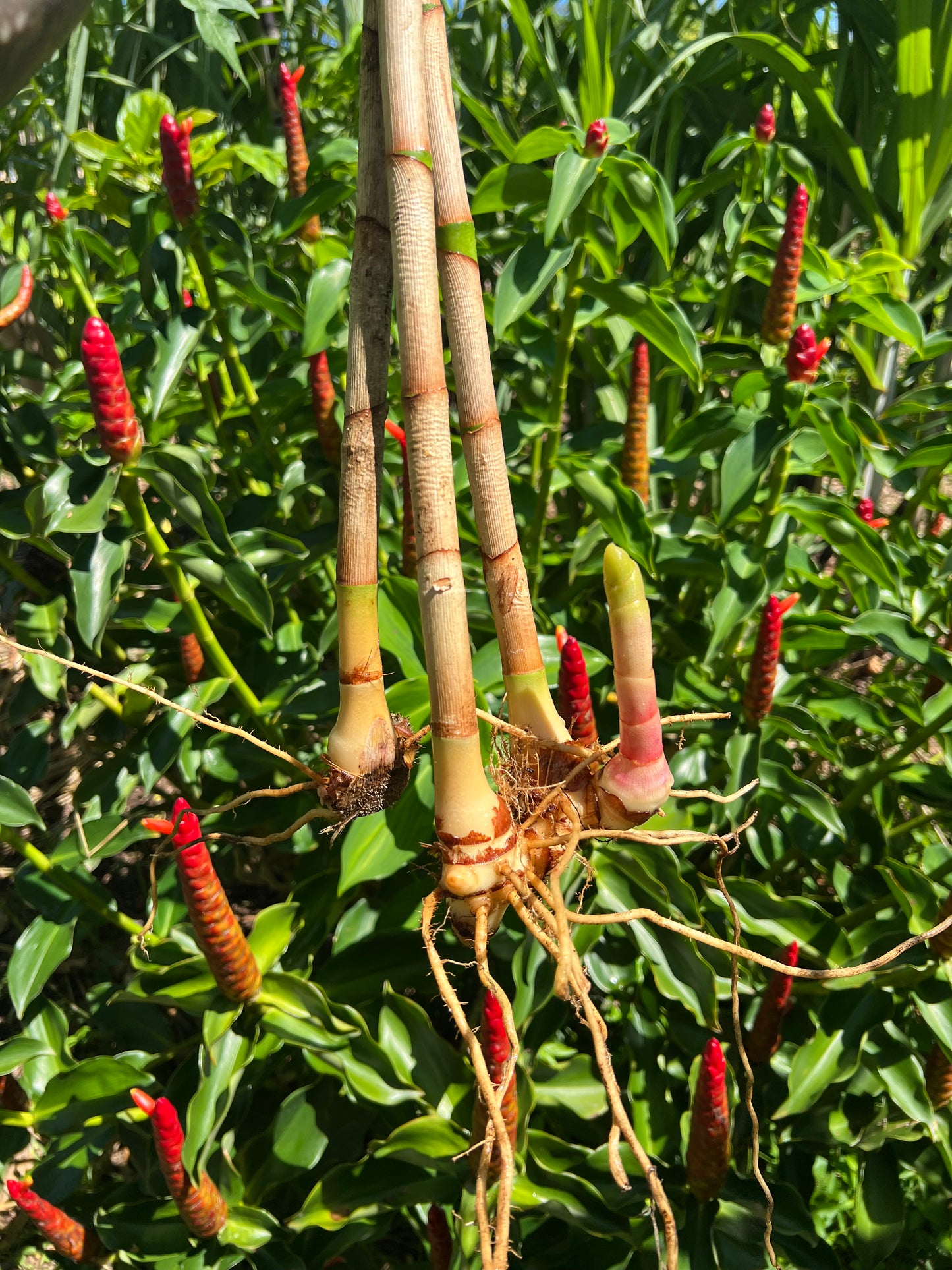
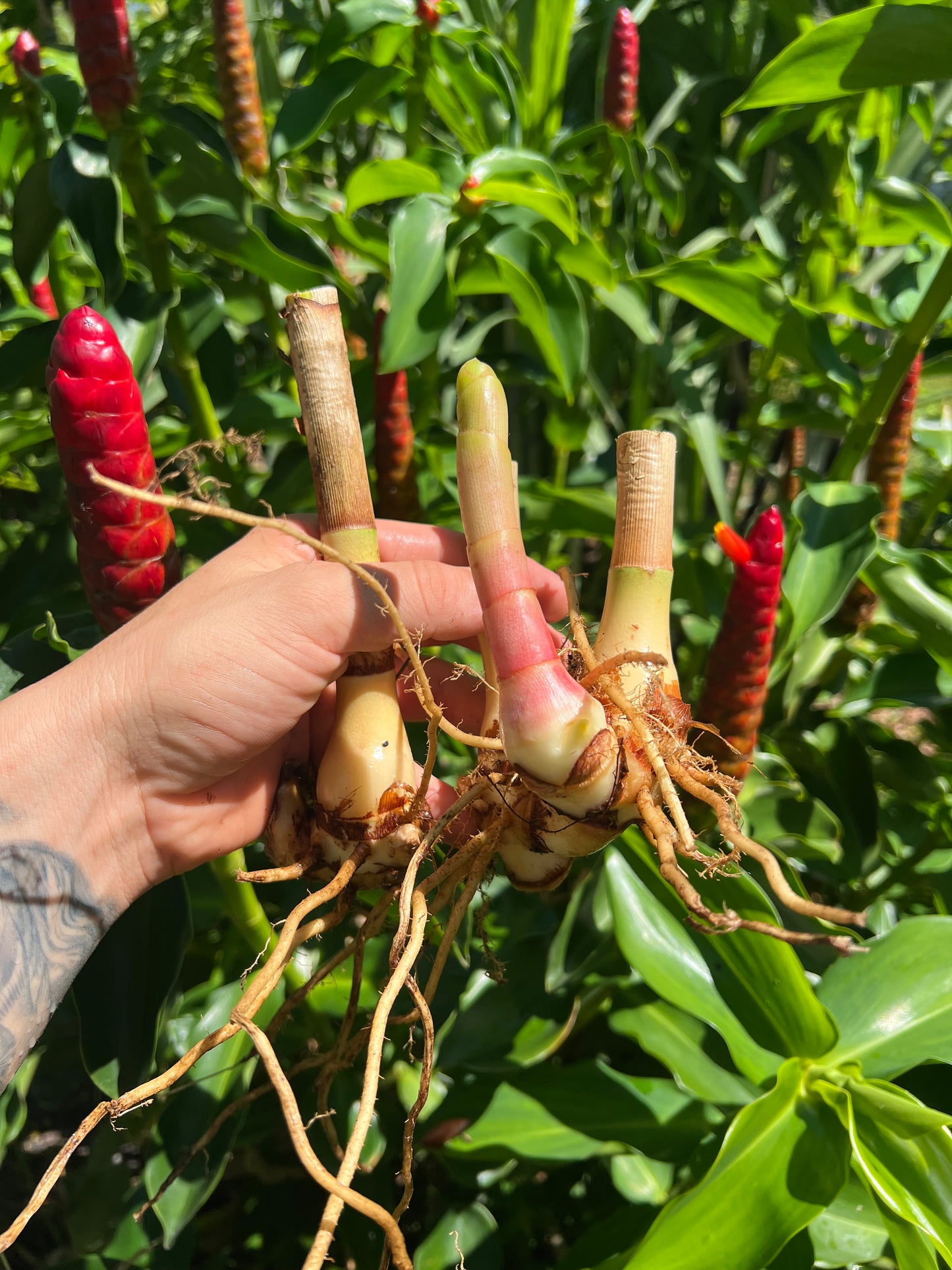
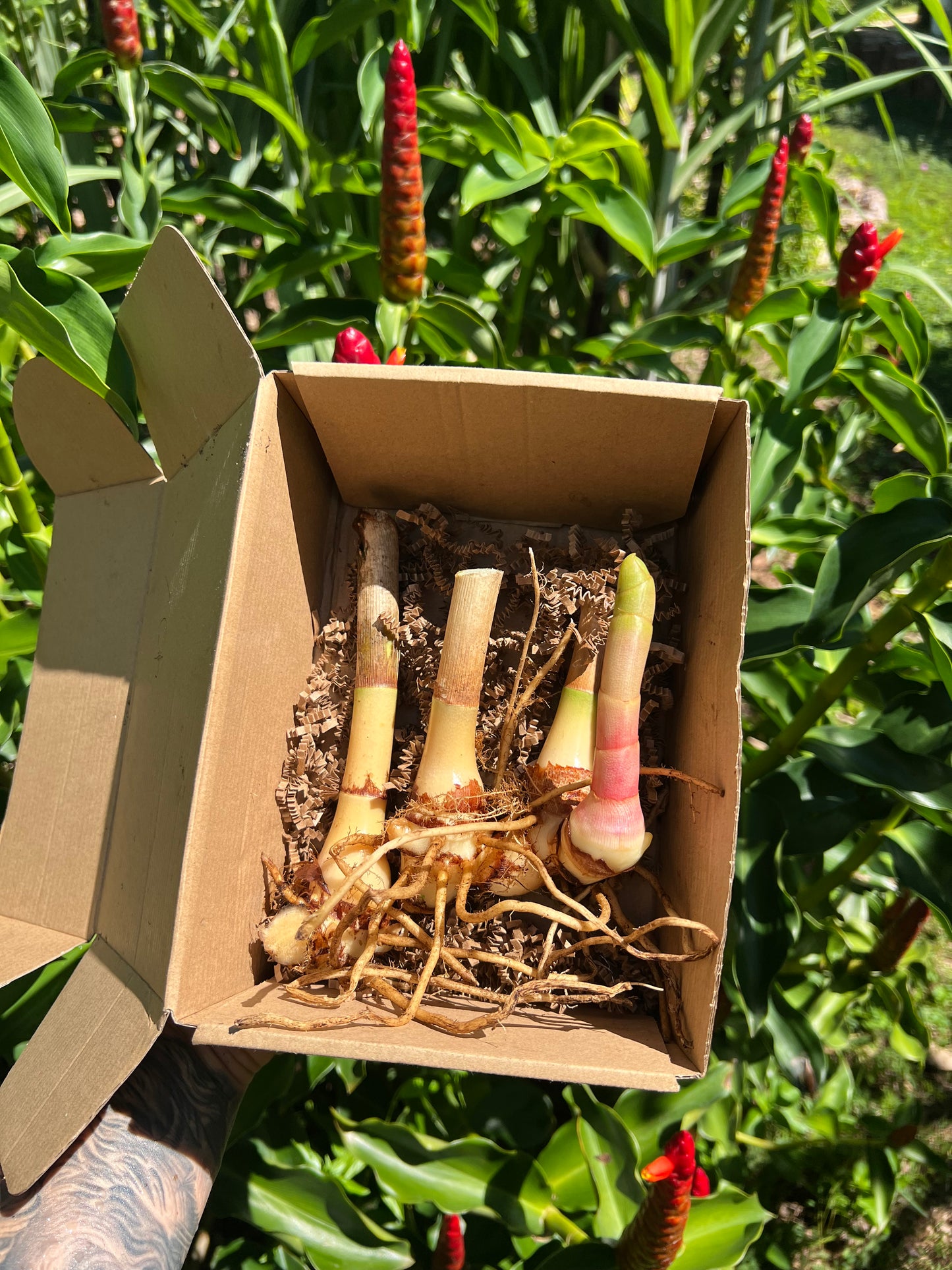
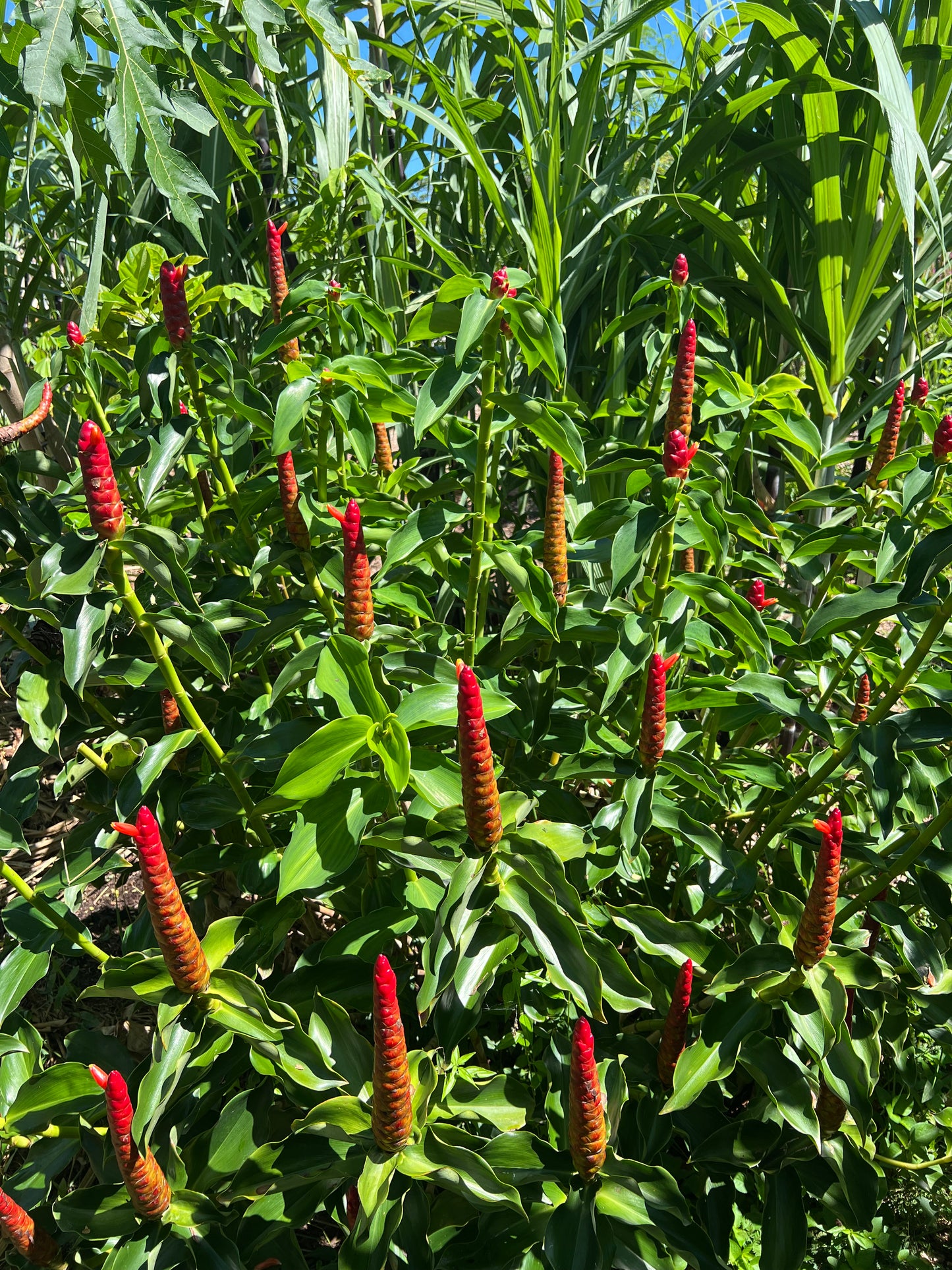
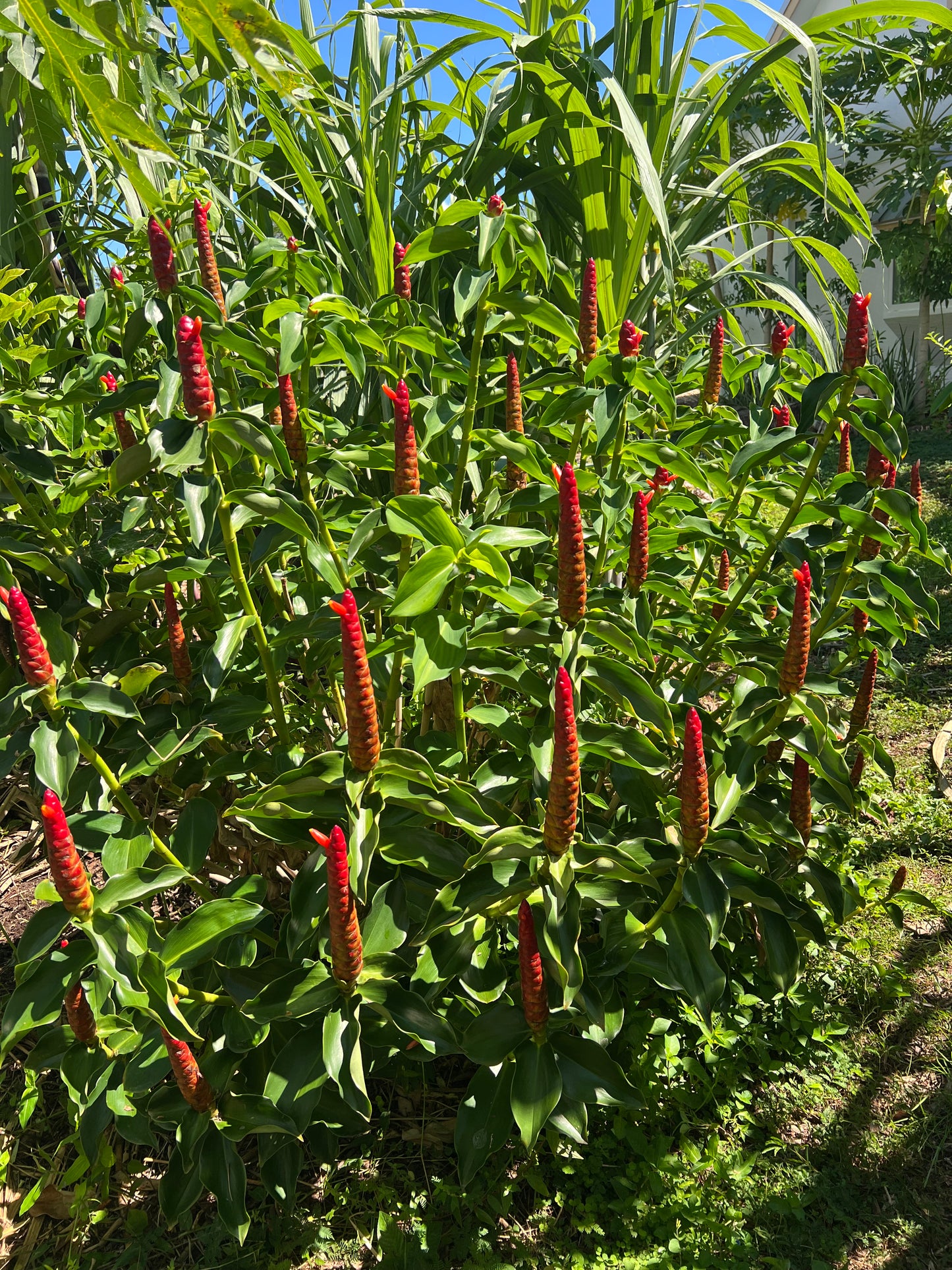
FAQs
What is Spiral Ginger?
Spiral Ginger (also called Costus or Spiral Flag) is a tropical ornamental plant known for its striking spiral-shaped stems and beautiful flowers. It's often grown for both its beauty and its edible/medicinal uses.
Is Spiral Ginger edible?
Yes! The young shoots and flower buds are edible and often used in teas, salads, and herbal remedies. Always harvest young, tender parts for best flavor.
Where is the best place to plant Spiral Ginger?
It grows best outdoors in tropical and subtropical climates (zones 8–11). In cooler climates, it can be grown in pots and brought indoors during winter.
Does Spiral Ginger need full sun or shade?
Spiral Ginger prefers partial shade to filtered sunlight. Too much direct sun can burn the leaves, while too much shade slows growth.
How tall does Spiral Ginger grow?
Most varieties grow between 3–6 feet tall, depending on conditions and care.
How much water does Spiral Ginger need?
Keep the soil consistently moist but not waterlogged. Spiral Ginger loves humidity and thrives with regular watering, especially in hot months.
Can Spiral Ginger survive cold weather?
It is not frost-tolerant. In areas with freezing temperatures, it should be grown in containers and moved indoors or protected during winter.
How do I plant Spiral Ginger rhizomes?
Plant the rhizome horizontally 1–2 inches below the soil surface, with the buds/eyes facing upward. Keep the soil moist until new shoots emerge.
How long does it take to grow and flower?
With the right conditions, Spiral Ginger typically sprouts in 2–4 weeks and may take 6–12 months to flower.
What type of soil is best?
Rich, well-draining soil with plenty of organic matter is ideal. Adding compost helps keep it healthy and vigorous.
Can Spiral Ginger be grown indoors?
Yes, it can be grown in pots indoors if placed in a warm, humid, and bright spot with indirect light.
How do I propagate Spiral Ginger?
The easiest way is by dividing rhizomes. Each piece with a visible bud can grow into a new plant.









